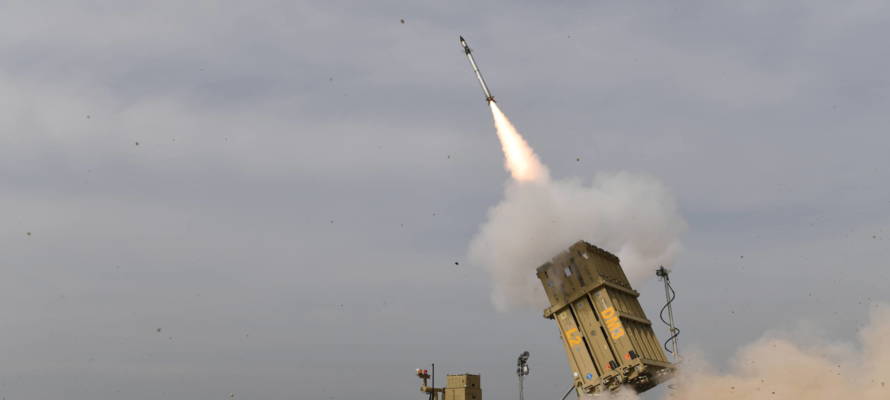New advanced Iron Dome system will also be deployed at sea to protect Israel’s offshore gas fields.
By Yakir Benzion, United With Israel
Israel’s Ministry of Defense announced Monday that it has completed a successful series of flight tests of the new and upgraded version of the Iron Dome missile defense system, simulating “advanced threats” that the country face during times of conflict both at land and on the sea.
The new upgraded version of the Iron Dome is expected to be delivered to the Israel Defense Force for operational use, where it will not only be deployed on land, but also be integrated and installed on the Israel Navy’s brand-new Sa’ar 6 corvettes. It will be central to the defense of Israel’s offshore waters, including strategically critical gas platforms located in the Mediterranean Sea of of Israel’s coast.
The Israel Missile Defense Organization (IMDO), which is a part of the Defense Ministry, conducted the tests at a base in central Israel along with the Iron Dome’s manufacturer, Rafael Advanced Defense Systems. The Israeli Air Force (IAF) and Navy also participated in firings to show that the system works.
The world-famous Iron Dome system has proven itself over and over again, sometimes on live TV, as an effective defense system against rockets fired by terrorists at Israeli towns and cities.
The highly advanced system plots the trajectory of the incoming rocket and launches interceptor missiles only if it determines the rockets are a danger. If the Iron Dome computers see that the incoming rocket will explode in an open area, it doesn’t launch any interceptors. To date, the system has knocked down hundreds of rockets fired at Israel, saving countless lives and preventing massive property damage.
The system is so good that in August 2019, the U.S. and Israel signed an agreement for the procurement of two Iron Dome Defense System batteries for the U.S. military.
Last month, Israel’s Ministry of Defense delivered the second of two Iron Dome Defense System batteries to the U.S. Army, completing the agreement.
The first battery was delivered to America in September 2020 and is already undergoing a process of implementation.
